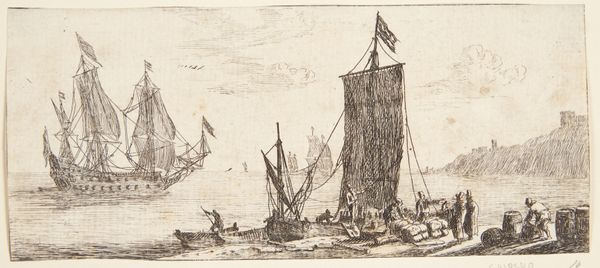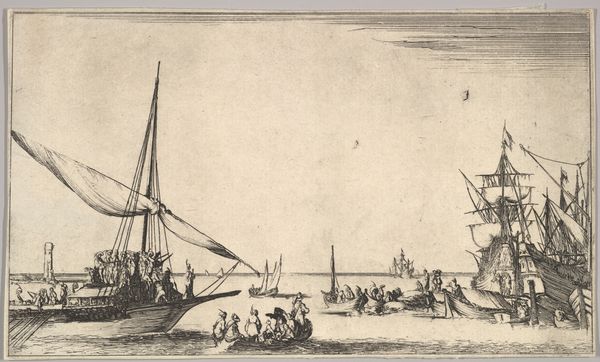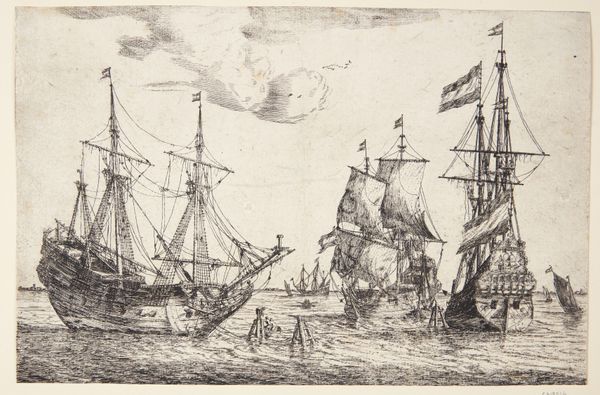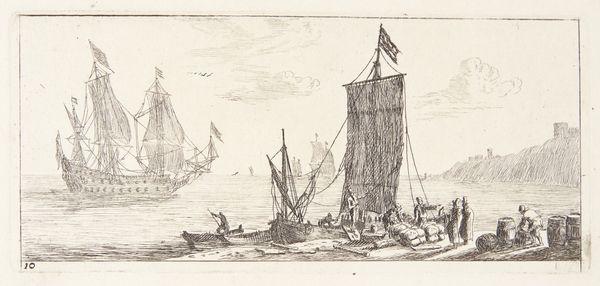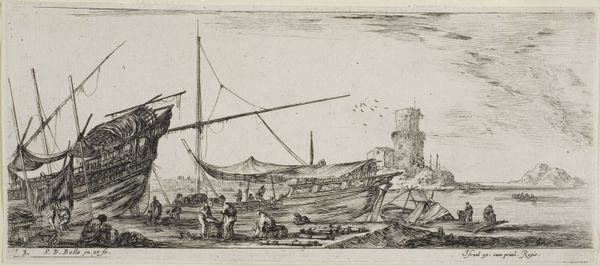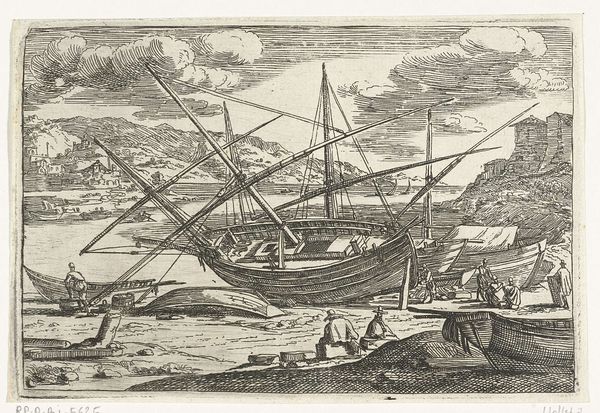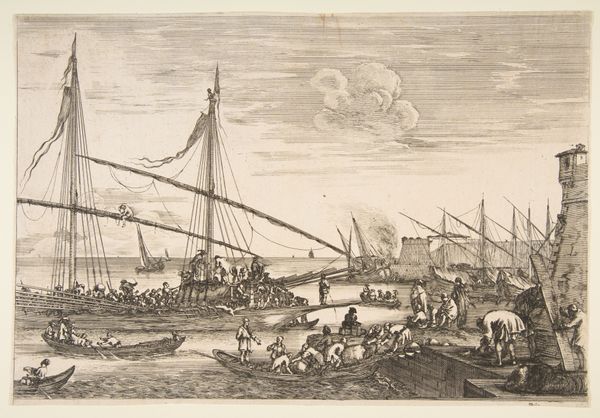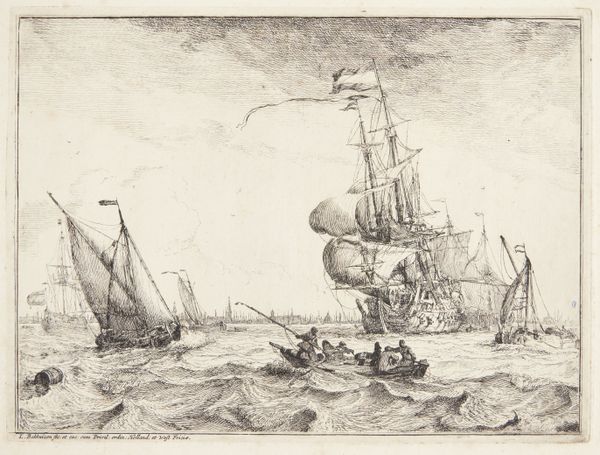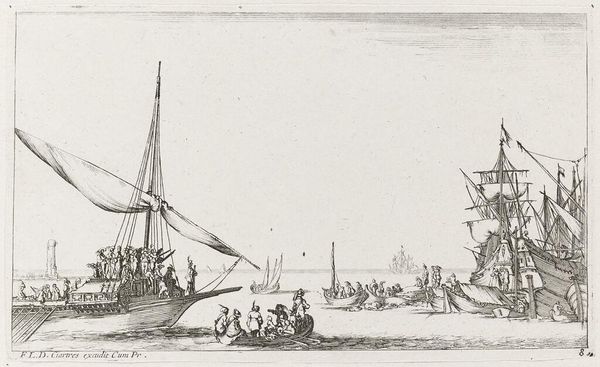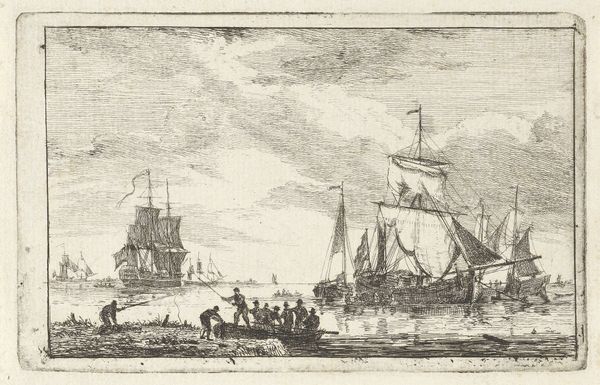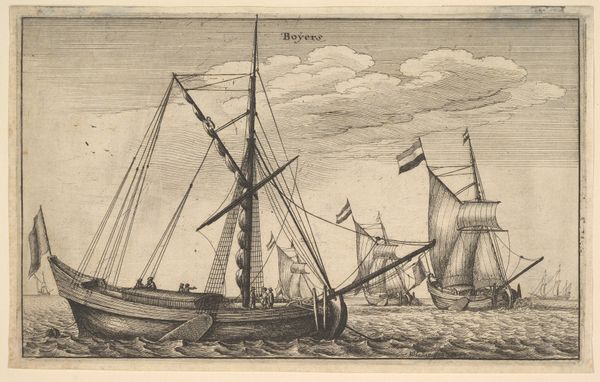
Landskab, i forgrunden et liggende par, der konverserer 1630 - 1705
0:00
0:00
print, etching
#
baroque
#
dutch-golden-age
# print
#
etching
#
landscape
#
figuration
Dimensions: 108 mm (height) x 155 mm (width) (bladmaal)
Curator: This etching, dating sometime between 1630 and 1705, is entitled "Landscape, in the foreground a reclining couple, conversing," by Adriaen van der Kabel. It's currently held here at the SMK, Statens Museum for Kunst. Editor: It's quite intricate for an etching, isn’t it? At first glance, I am struck by the prominence of the ships and figures, dominating the supposed 'landscape'. It creates this sense of busy port activity that feels central to the work, doesn’t it? Curator: Precisely. While titled as a landscape, its engagement with the bustling maritime trade of the Dutch Golden Age cannot be understated. Consider the period - the Netherlands were a dominant force in global commerce. Images like these are not just picturesque scenes but documents of economic power. Editor: The ships indeed take precedence. Even those tiny figures, rendered with remarkable detail for their size, are full of purpose. The rigging almost appears as this visual, structural matrix which contrasts with those small boats surrounding them, bringing me back to thinking about cultural identity. What can it reveal about Dutch maritime identity during the Golden Age? Curator: Excellent question. Consider how sea travel became so vital in society for its international trade. Ports, like the one presented, are very telling. Van der Kabel showcases an important aspect of socio-economic importance of global exploration for not just the Netherlands, but the rest of the world. Editor: You're absolutely right; it makes me think of the ship itself being a symbol of that ambition, of both venturing out and acquiring territory through power. What seemed like a mundane port is a symbol of potential— the ship almost always serves this purpose, doesn’t it? And I also recognize those people busily rowing toward their destinations as the spirit of trade made incarnate! Curator: An iconographic analysis is spot-on here. These aren’t simply vessels and sailors; they are representative of that crucial movement that impacted society during a formative time in not only their history, but world history. Editor: Yes! Thanks for giving us an incredible perspective on how one seemingly busy etching could encapsulate a complex web of activity so historically and economically rich. Curator: Of course; It's those historical echoes, intertwined with aesthetic choices, that really make this work sing.
Comments
No comments
Be the first to comment and join the conversation on the ultimate creative platform.

